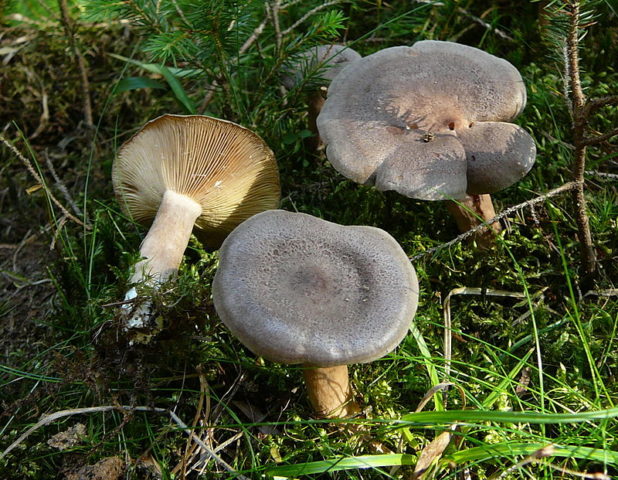Content
Mushrooms of the genus Lactarius are popularly called milk mushrooms. They are actively collected and are considered one of the most delicious species. But there are varieties that are considered conditionally edible. The pale milky belongs to this group. It has an unremarkable appearance and rarely ends up in the basket of an experienced mushroom picker.
Where does the pale milky grow?
It is found on the territory of the northern continents: America and Eurasia. Distributed in mixed and deciduous forests near birch. Its mycelia form mycorrhizal compounds with the roots of the tree. Loves damp places covered with moss. Experienced mushroom pickers easily recognize this species by its small size and growth characteristics: it does not grow alone, but settles in groups, sometimes in large colonies.
What does the milky mushroom look like?
Small in size, unsightly. The faded milkman does not immediately catch the eye. The hat is 6-10 cm in diameter. In young fruiting bodies it is convex, with a small dark brown tubercle in the middle. Closer to the edges the surface becomes lighter. On the inside of the cap there are plates that make up the geminophore. They are creamy, and when pressed, a milky juice comes out, which quickly turns gray. Small spores of ocher or grayish color. The pulp is thin, odorless, but with a pungent taste.
The stems of young mushrooms (4-8 cm) are solid, with pulp. But in adult fruiting bodies the stem becomes empty. It is lighter than the rest and has the shape of a straight cylinder.

The pale milky grows in families
Is it possible to eat black milkweed?
The fruit body is not poisonous. Toxins make up a low percentage and cannot lead to poisoning if consumed in small quantities. But children, pregnant women and people with diseased kidneys and digestive systems are not advised to consume this species. Although some people collect young mushrooms and salt them.
False doubles of the familial milkweed
Faded or flaccid milk mushrooms can be confused with edible and conditionally edible mushrooms:
- Serushka is a conditionally edible mushroom, but amateurs collect it and pickle it. It is distinguished by uneven, wavy edges of brown or gray color. A milky juice is released from the white pulp, which does not change in the air. Concentric circles are clearly visible on the surface of the serushka cap.
- The common milkweed is one of the conditionally edible counterparts of the faded species. But it is not difficult to distinguish: it is slightly larger, the surface of the cap is darker, and in wet weather it is sticky and wet. When secreted, the milky juice does not turn gray, but turns yellow. It is found not only near birch trees, but also spruce and pine trees.In wet weather, the cap of the common milkweed is wet and slimy.
- The milkweed grows in deciduous and coniferous forests in small groups. It is distinguished by a dark gray or dark brown cap with a darker center. The smell of the pulp is reminiscent of coconut. The milky juice does not change in air. The mushroom is also conditionally edible. The dark gray, even bluish color of the cap indicates the papillary milk mushroom.
Collection rules
Collected from mid-August. A more widespread appearance is observed in September. Young fruiting bodies have the best taste; experts do not recommend cutting off old mushrooms.
How to cook pale milkweed
This species, like other milk mushrooms, is recommended to be soaked for more than 2 days, periodically changing the water. This promotes the release of bitterness and toxins. Then they salt or marinate.
Conclusion
The pale milkweed is not poisonous. With moderate consumption it does not cause discomfort or poisoning. But do not forget that this is a conditionally edible mushroom, and sometimes it is better to pass by them.











